Crowds along the Long Walk in Windsor, England, stand silently at the end of Sept. 19's funeral service for Queen Elizabeth, who died on Sept. 8.Kiran Ridley/The Globe and Mail
More below • State funeral in photos • Maps: Mourning in London and Windsor
Britain and the world have bid farewell to Queen Elizabeth II in a day-long series of services that began with a sombre funeral at Westminster Abbey and ended with the symbolic removal of her crown, orb and sceptre at Windsor Castle.
Hundreds of thousands of mourners lined streets, filled parks and jammed into city squares across Britain on Monday to either catch a glimpse of the Queen’s coffin one last time or watch the proceedings on giant television screens.
“People of loving service are rare in any walk of life,” the Archbishop of Canterbury, Justin Welby, told the hundreds of world leaders, including Prime Minister Justin Trudeau and U.S. President Joe Biden, who gathered at Westminster Abbey for the funeral. “Leaders of loving service are still rarer. But in all cases those who serve will be loved and remembered when those who cling to power and privileges are forgotten.”

The funeral at Westminster Abbey.JACK HILL/POOL/AFP via Getty Images
The services at Westminster and Windsor marked the culmination of 10 days of mourning for the Queen, who died on Sept. 8 at Balmoral Castle in Scotland. And they were fitting tributes to a monarch who reigned for 70 years and who felt a deep attachment to the church.
The order of service was taken from the 1662 Book of Common Prayer, the official prayer book of the Church of England, and the hymns were chosen by Elizabeth. One was The Lord’s My Shepherd, I’ll Not Want, which was sung at the Queen’s wedding to the Duke of Edinburgh in 1947.
“As soon as the music started playing you could hear everything perfectly and that was extremely powerful,” said Eliza Reid, the first lady of Iceland who is Canadian and who was among the 2,000 invitees. “When they played God Save The King you just got shivers down the spine.”
Throughout the service, throngs of people outside the Abbey sang along to some of the hymns and joined Rev. Welby in reciting The Lord’s Prayer. They also stood still when The Last Post sounded to mark the start of two minutes of silence.
Even in London’s Hyde Park, where tens of thousands of people congregated to watch the funeral on six giant screens, the only sounds were the squawk of birds and the angry whisper of “shush” to anyone speaking on a cellphone.
From Westminster Abbey, the coffin made a final pass through the streets of London on gun carriage pulled by 142 members of the Royal Navy to Wellington Arch. From there it was placed in a hearse and driven to Windsor Castle where the Queen was interred in St. George’s Chapel next to her husband, her sister and her parents.
During the procession, King Charles III marched alongside the casket, which carried a small handwritten note from him that read, “In loving and devoted memory. Charles R.” In front of him, four members of the RCMP musical ride led the cortège dressed in their traditional flaming red jackets.
The Queen's coffin is escorted through Windsor on the way to her final resting place, Windsor Castle.Kiran Ridley/The Globe and Mail
:format(jpeg)/cloudfront-us-east-1.images.arcpublishing.com/tgam/SO6IFXY5JFIONCY7AKID752MLM.JPG)
:format(jpeg)/cloudfront-us-east-1.images.arcpublishing.com/tgam/ZHG7AJXACZIIHCIULFELGJ5X5E.jpg)
“She was a great lady,” said Ian Paternatte, a navy veteran who came to Hyde Park to pay his respects to his “ultimate boss.” Mr. Paternatte spent 27 years in the Royal Navy as a gunnery instructor and he’d been in several parades attended by the Queen, who was head of the armed forces. On Monday, Mr. Paternatte, 53, wore his navy beret and a row of medals he’d earned during tours in Iraq and Afghanistan.
Many others who came to the park also wore their medals and some came in full uniform. Lots brought flowers or wrapped themselves up in Union Jacks or flags adorned with the Queen’s picture.
Jill Wilson showed up with a giant Paddington Bear that she’d made over the weekend. “It took about two days,” she said as she sat in a chair beside the bear. Ms. Wilson is a prop designer in London and she wanted to do something to honour the Queen, who famously starred in a skit with Paddington during her Platinum Jubilee celebrations in June.
At first the mood in the park was almost festive. Some people spread out blankets and set up lawn chairs. Others brought tents, which they quickly dismantled once the sun broke through the clouds. Food vendors served up burgers, hot dogs, fish and chips, and Thai dishes. A few hearty souls managed to find an open pub serving take-away beer.
Paula Juffs and her friends Pat Stafford and Sue Libby arrived at 7 a.m. and planted their lawn chairs as close to one of the screens as possible. “This is the best view. We want to see everything,” Ms. Juffs said.
They could have watched everything on television at home, but they all felt compelled to come to the park. “It’s nice in a shared space. You feel like you want to be together with other people and feel the atmosphere,” Ms. Juffs said.
:format(jpeg)/cloudfront-us-east-1.images.arcpublishing.com/tgam/3ZZKSMWL6FMZJHIPYZ5MFKMVDU.jpg)
:format(jpeg)/cloudfront-us-east-1.images.arcpublishing.com/tgam/X6EUKS5HWVJVPCIMVPD6XIGFRM.jpg)
The mood changed as soon as the funeral began with pallbearers bringing the coffin out of Westminster Hall, where the Queen had been lying in state since Wednesday. The crowd grew quiet and nearly everyone stood as the casket entered the Abbey.
They remained on their feet until the first Bible reading. And then they all rose once more for the period of silence and a rousing rendition of God Save The King.
As the coffin made its way along The Mall and toward Hyde Park corner, waves of applause could be heard all along the route.
“I was crying,” Caroline Warren said. “I have all my tissues here.”
She’d come with her partner, Leigh Gray, and their daughter Bernadette. They each held small British flags and they reluctantly joined thousands of others in singing God Save The King. Ms. Warren wanted to sing the words to the old national anthem, the one for the Queen.
“It’s very strange singing God Save The King when you are burying your Queen,” she said. “They should have let us sing God Save The Queen one last time.”
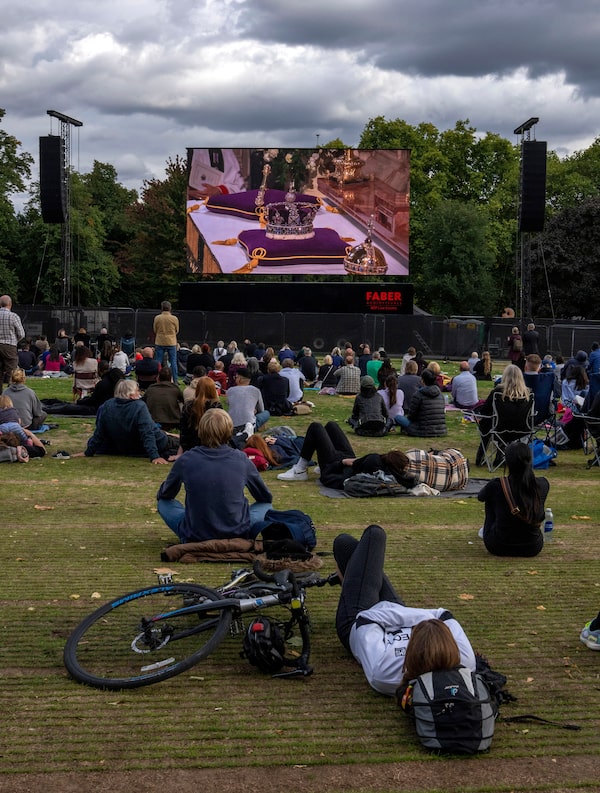
Londoners watch the funeral on a giant screen at Hyde Park.Nariman El-Mofty/The Associated Press
Long after the funeral service ended, thousands of people remained in the park glued to the television screens. Many sat transfixed even though the only images for much of the afternoon were of the hearse travelling along the road to Windsor.
Tina Lennox and her daughter Nikita couldn’t leave. They’d been at the park all day and they weren’t going until the service at Windsor was over. “We thought we’d stay just until the end,” Tina said. “For most people it’s back to work tomorrow and everything is just the same. So we wanted to stay a little longer.”
Colin Sutch stayed too. He’d come up from Bournemouth on the south coast of England with his wife and close friend. “It’s a once-in-a-lifetime thing,” he said. With a gesture to the screen he added: “Best woman who ever lived.”
He didn’t want to let go. The past 10 days had been a break from the grind of worries about the war in Ukraine, the cost of living and the political wrangling in Parliament. It had been a rare period of reflection in a world accustomed to quick resolutions and fast-paced news.
“Tomorrow life will just go back to normal things. All the boring rubbish,” he said. When asked whether he thought the public would quickly move on from the Queen’s funeral, Mr. Sutch nodded and replied: “It’s the world we live in now, I’m afraid. There will be something else. Everything is just five-minute wonders unfortunately.”
In photos: Queen Elizabeth’s state funeral
Maps: Mourning rites in London and Windsor
The funeral day began with a procession of the coffin to Westminster Abbey, which was first consecrated in 1065 for Edward the Confessor. Afterward, it was paraded across London to the Wellington Arch.

LONDON
Windsor
Castle
0
20
KM
Hyde
Park
St. James’
Palace
Admiralty
Arch
Horse
Guards
The Mall
Big Ben
10 Downing St.
Buckingham
Palace
Wellington
Arch
Westminster
Abbey
Palace of
Westminster
FUNERAL SCHEDULE
1
Sept. 19, 10:44 a.m. local time:
Queen’s coffin goes from Westminster Hall on Royal Navy State Gun Carriage, followed on foot by King and senior members of Royal Family
2
10:52 a.m.: Procession arrives at Westminster Abbey
3
11 a.m.: Funeral service begins, conducted by Dean of Westminster David Hoyle, with Archbishop of Canterbury Justin Welby giving sermon. Service attended by 2,000 guests, including members of Royal Family, European royals and heads of state from around the world
4
11:55 a.m.: Last Post sounded, followed by national two-minute silence. Service ends with national anthem, then lament played by Queen’s piper
5
12 p.m.: Coffin replaced on State Gun Carriage and taken to Wellington Arch, Hyde Park Corner, in procession led by Royal Canadian Mounted Police and members of NHS staff. Big Ben tolls and guns fire in Hyde Park at one-minute intervals
6
1 p.m.: Queen’s coffin transferred to hearse and driven to St. George’s Chapel at Windsor Castle
WESTMINSTER ABBEY
Contains tombs or memorials of over 3,300 prominent Britons including 17 monarchs, eight prime ministers, writers, musicians, actors, scientists and military leaders
ROYAL COFFIN
Draped in Royal Standard, adorned with crown, orb, sceptre and wreath of flowers. Carried through nave and quire to platform by eight Grenadier Guards
STATE GUN CARRIAGE
Last seen in 1979 for funeral of Lord Mountbatten
40 sailors behind
acting as brake
Pulled by 98 sailors
using drag ropes
THE GLOBE AND MAIL, SOURCE: TILEZEN; OPENSTREETMAP CONTRIBUTORS; GRAPHIC NEWS; REUTERS

LONDON
Windsor
Castle
0
20
KM
Hyde
Park
St. James’
Palace
Admiralty
Arch
Horse
Guards
The Mall
Big Ben
10 Downing St.
Buckingham
Palace
Wellington
Arch
Westminster
Abbey
Palace of
Westminster
FUNERAL SCHEDULE
1
Sept. 19, 10:44 a.m. local time:
Queen’s coffin goes from Westminster Hall on Royal Navy State Gun Carriage, followed on foot by King and senior members of Royal Family
2
10:52 a.m.: Procession arrives at Westminster Abbey
3
11 a.m.: Funeral service begins, conducted by Dean of Westminster David Hoyle, with Archbishop of Canterbury Justin Welby giving sermon. Service attended by 2,000 guests, including members of Royal Family, European royals and heads of state from around the world
4
11:55 a.m.: Last Post sounded, followed by national two-minute silence. Service ends with national anthem, then lament played by Queen’s piper
5
12 p.m.: Coffin replaced on State Gun Carriage and taken to Wellington Arch, Hyde Park Corner, in procession led by Royal Canadian Mounted Police and members of NHS staff. Big Ben tolls and guns fire in Hyde Park at one-minute intervals
6
1 p.m.: Queen’s coffin transferred to hearse and driven to St. George’s Chapel at Windsor Castle
WESTMINSTER ABBEY
Contains tombs or memorials of over 3,300 prominent Britons including 17 monarchs, eight prime ministers, writers, musicians, actors, scientists and military leaders
ROYAL COFFIN
Draped in Royal Standard, adorned with crown, orb, sceptre and wreath of flowers. Carried through nave and quire to platform by eight Grenadier Guards
STATE GUN CARRIAGE
Last seen in 1979 for funeral of Lord Mountbatten
40 sailors behind
acting as brake
Pulled by 98 sailors
using drag ropes
THE GLOBE AND MAIL, SOURCE: TILEZEN; OPENSTREETMAP CONTRIBUTORS; GRAPHIC NEWS; REUTERS

Piccadilly Circus
LONDON
Charing
Cross
6
TRAFALGAR
SQUARE
Detail
Windsor
Castle
Pall Mall
Embankment
0
20
Admiralty
Arch
KM
Horse Guards
St. James’ Palace
Hyde
Park
Green Park
Hyde Park
Corner
The Mall
10 Downing St.
St. James’ Park
5
Big Ben
Buckingham
Palace
Wellington
Arch
Birdcage Walk
1
St. James’ Park
Victoria St.
2, 3 and 4
CENTRAL LONDON
Westminster
Abbey
Palace of
Westminster
0
100
m
FUNERAL SCHEDULE
1
4
Sept. 19, 10:44 a.m. local time:
Queen’s coffin goes from Westminster Hall on Royal Navy State Gun Carriage, followed on foot by King and senior members of Royal Family
11:55 a.m.: Last Post sounded, followed by national two-minute silence. Service ends with national anthem, then lament played by Queen’s piper
5
12 p.m.: Coffin replaced on State Gun Carriage and taken to Wellington Arch, Hyde Park Corner, in procession led by Royal Canadian Mounted Police and members of NHS staff. Big Ben tolls and guns fire in Hyde Park at one-minute intervals
2
10:52 a.m.: Procession arrives at Westminster Abbey
3
11 a.m.: Funeral service begins, conducted by Dean of Westminster David Hoyle, with Archbishop of Canterbury Justin Welby giving sermon. Service attended by 2,000 guests, including members of Royal Family, European royals and heads of state from around the world
6
1 p.m.: Queen’s coffin transferred to hearse and driven to St. George’s Chapel at Windsor Castle
WESTMINSTER ABBEY
Contains tombs or memorials of over 3,300 prominent Britons including 17 monarchs, eight prime ministers, writers, musicians, actors, scientists and military leaders
Tomb of Henry VII
High Altar
Tomb of Unknown Warrior
Resting place of unidentified soldier killed in World War I
Tomb of Mary,
Queen of Scots
Tomb of Elizabeth I
ROYAL COFFIN
Draped in Royal Standard, adorned with crown, orb, sceptre and wreath of flowers. Carried through nave and quire to platform by eight Grenadier Guards
Nave
Quire
STATE GUN CARRIAGE
Last seen in 1979 for funeral of Lord Mountbatten
40 sailors behind
acting as brake
Pulled by 98 sailors
using drag ropes
THE GLOBE AND MAIL, SOURCE: TILEZEN; OPENSTREETMAP CONTRIBUTORS; GRAPHIC NEWS; REUTERS
The Queen’s final resting place is Windsor Castle, west of London, whose chapel is where her late husband, parents and many ancestors buried.

State
apartments
Round Tower: Houses Royal Archives
St. George’s Chapel:
Spiritual home of Order of the Garter, order of chivalry established by Edward III in 1348
Curfew
Tower
Private apartments
Buckingham
Palace
LONDON
King Henry
VIII Gate
Windsor
0
20
ST. GEORGE’S CHAPEL
Among finest examples of Gothic architecture in England. Construction begun by
Edward IV in 1475
and completed by
Henry VIII in 1528
KM
High Altar
Royal Vault:
Ten former
Sovereigns are buried
at St. George’s Chapel.
Nave
Tomb of George V and Queen Mary, Queen’s grandparents
Electric lift: Lowers funeral plinth into the Royal Vault
Quire: Tombs include Henry VIII and his third wife Jane Seymour, and Charles I, executed in 1649
KING GEORGE VI MEMORIAL CHAPEL
Small chapel with its own vault, added in 1969. First structural addition to exterior of St. George’s Chapel since 1528
King George VI
Dec. 14, 1895 –
Feb. 6, 1952
Queen Elizabeth
The Queen Mother
Aug. 4, 1900 –
March 30, 2002
Princess Margaret
Aug. 21, 1930 –
Feb. 9, 2002
Prince Philip,
Duke of Edinburgh
June 10, 1921 –
April 9, 2021
Black marble gravestone Inscribed in gold lettering with names of George VI and his wife, Elizabeth
graphic news, Sources: Windsor Castle, The Royal Family

State
apartments
Round Tower: Houses Royal Archives
St. George’s Chapel:
Spiritual home of Order of the Garter, order of chivalry established by Edward III in 1348
Curfew
Tower
Private apartments
Buckingham
Palace
LONDON
King Henry
VIII Gate
Windsor
0
20
ST. GEORGE’S CHAPEL
Among finest examples of Gothic architecture in England. Construction begun by
Edward IV in 1475
and completed by
Henry VIII in 1528
KM
High Altar
Royal Vault:
Ten former Sovereigns are buried at St. George’s Chapel.
Nave
Tomb of George V and Queen Mary, Queen’s grandparents
Electric lift: Lowers funeral plinth into the Royal Vault
Quire: Tombs include Henry VIII and his third wife Jane Seymour, and Charles I, executed in 1649
KING GEORGE VI MEMORIAL CHAPEL
Small chapel with its own vault, added in 1969. First structural addition to exterior of St. George’s Chapel since 1528
King George VI
Dec. 14, 1895 –
Feb. 6, 1952
Queen Elizabeth
The Queen Mother
Aug. 4, 1900 –
March 30, 2002
Princess Margaret
Aug. 21, 1930 –
Feb. 9, 2002
Prince Philip,
Duke of Edinburgh
June 10, 1921 –
April 9, 2021
Black marble gravestone Inscribed in gold lettering with names of George VI and his wife, Elizabeth
graphic news, Sources: Windsor Castle, The Royal Family

State apartments
Round Tower: Houses Royal Archives
St. George’s Chapel:
Spiritual home of Order of the Garter, order of chivalry established by Edward III in 1348
Curfew
Tower
Private apartments
Buckingham
Palace
LONDON
King Henry
VIII Gate
Windsor
0
20
KM
ST. GEORGE’S CHAPEL
Among finest examples of Gothic architecture in England. Construction begun by Edward IV in 1475 and completed by Henry VIII in 1528
Royal Vault:
Ten former Sovereigns are buried at St. George’s Chapel. Kings George III (d.1820), George IV (d.1830); William IV (d.1837) lie in Royal Vault. Prince Philip was temporarily laid to rest in Royal Vault in 2021. He will be relocated to George VI Memorial Chapel, to lie alongside his wife of 73 years
High Altar
Nave
Tomb of George V and Queen Mary, Queen’s grandparents
Electric lift: Lowers funeral plinth into the Royal Vault
Quire: Tombs include Henry VIII and his third wife Jane Seymour, and Charles I, executed in 1649
KING GEORGE VI MEMORIAL CHAPEL
Small chapel with its own vault, added in 1969. First structural addition to exterior of St. George’s Chapel since 1528
King George VI
Dec. 14, 1895 –
Feb. 6, 1952
Early death at age 56
made Elizabeth Queen
Queen Elizabeth
The Queen Mother
Aug. 4, 1900 –
March 30, 2002
Died at age 101
Princess Margaret
Aug. 21, 1930 –
Feb. 9, 2002
Ashes interred in chapel
Prince Philip,
Duke of Edinburgh
June 10, 1921 –
April 9, 2021
Black marble gravestone Inscribed in gold lettering with names of George VI and his wife, Elizabeth
graphic news, Sources: Windsor Castle, The Royal Family
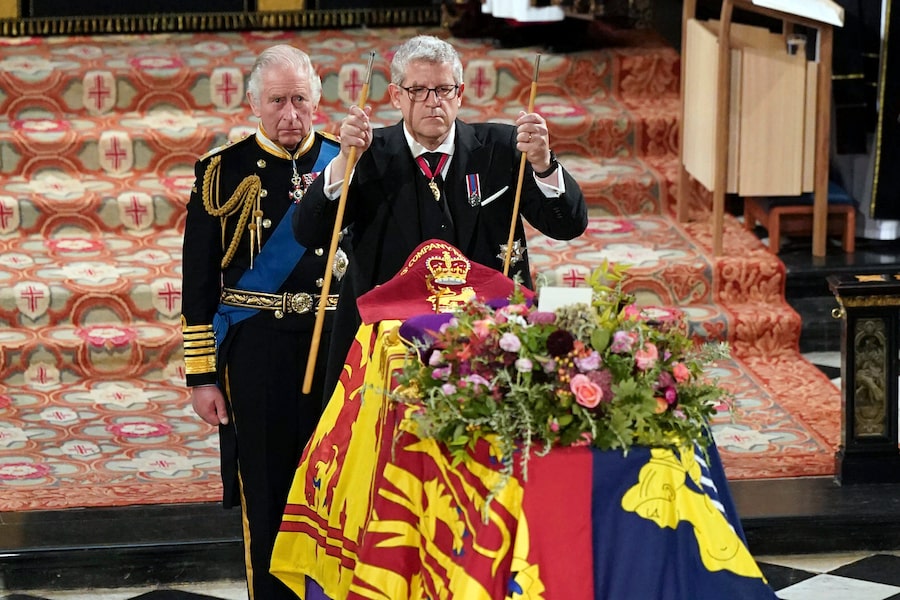
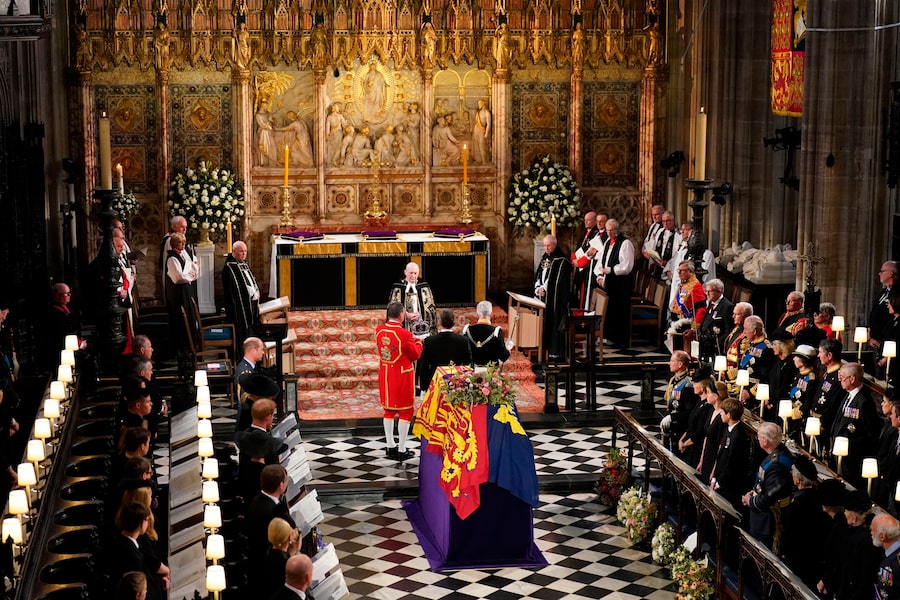
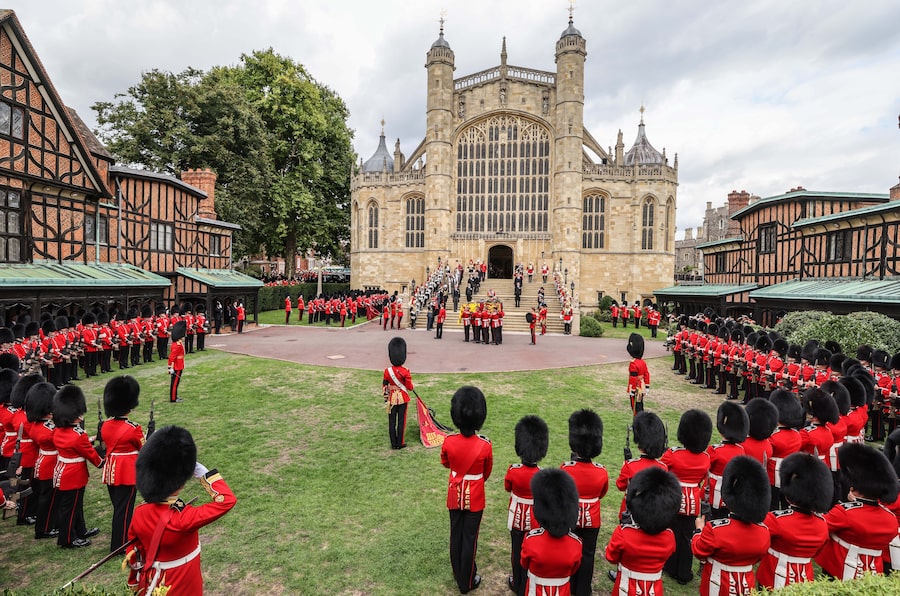



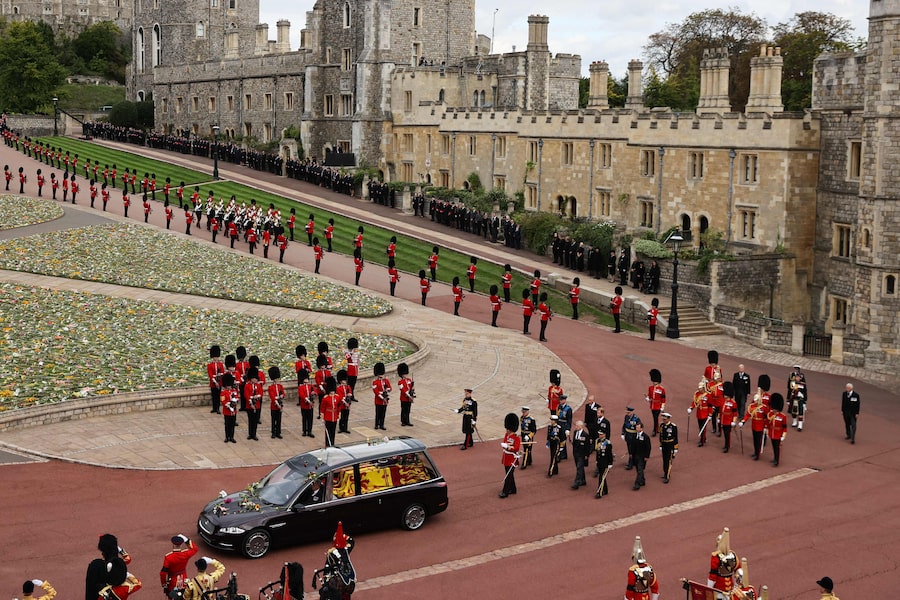
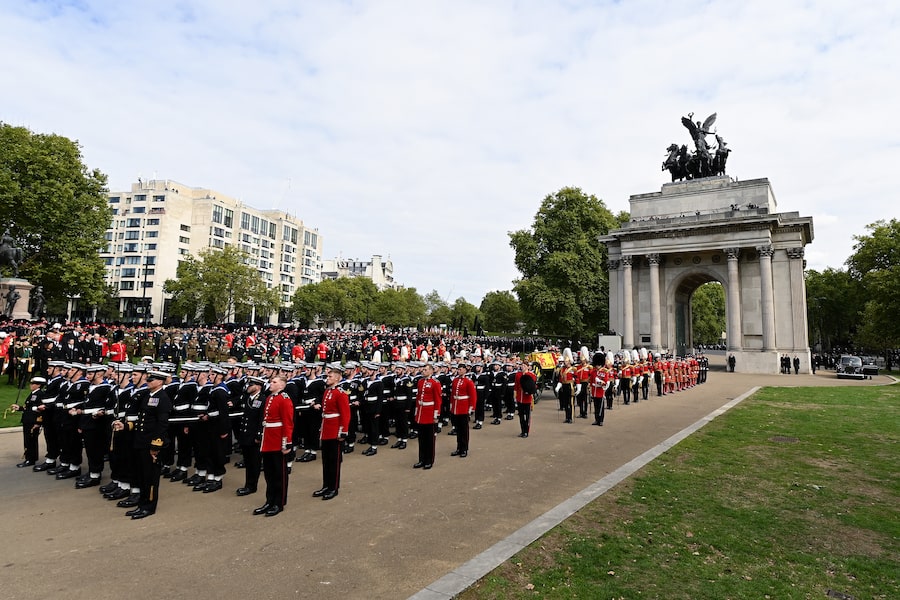

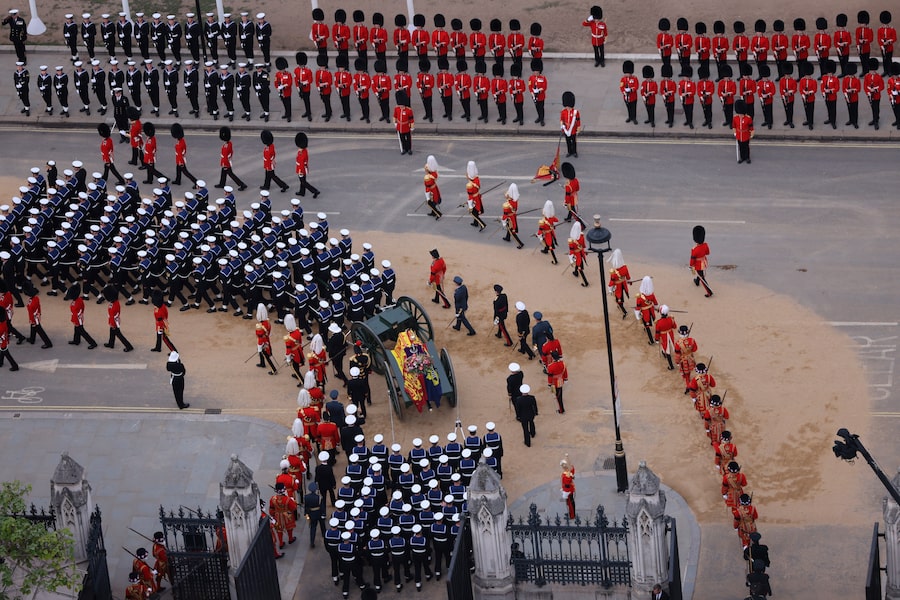



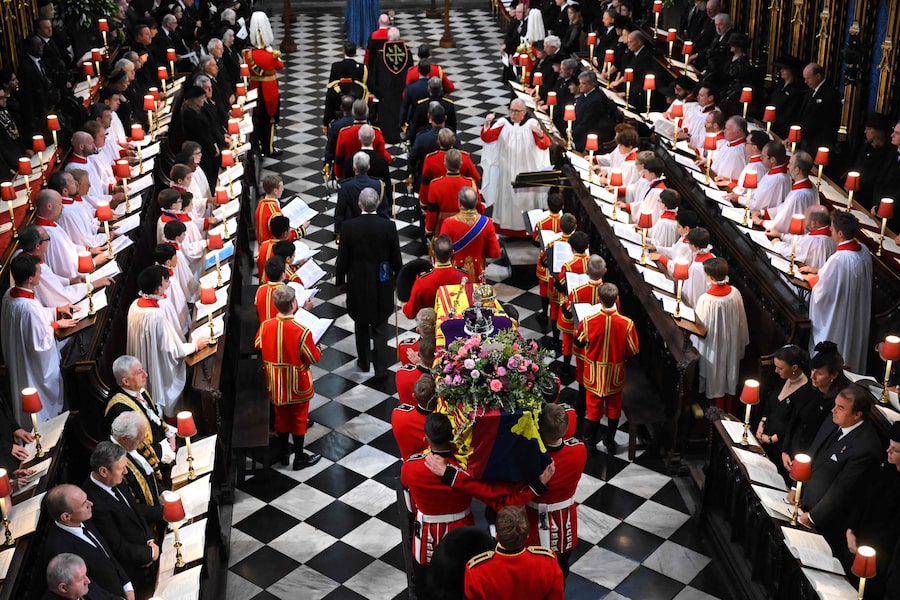



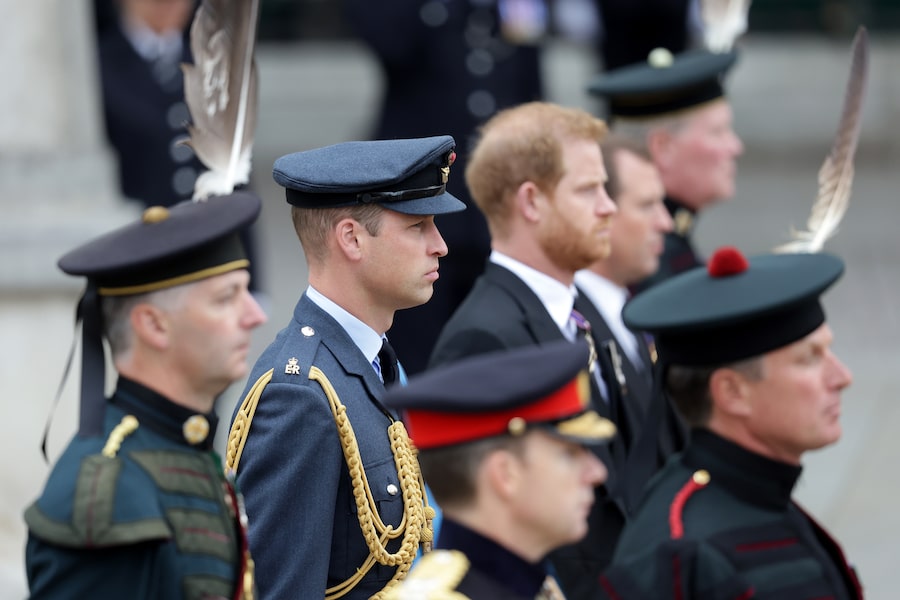
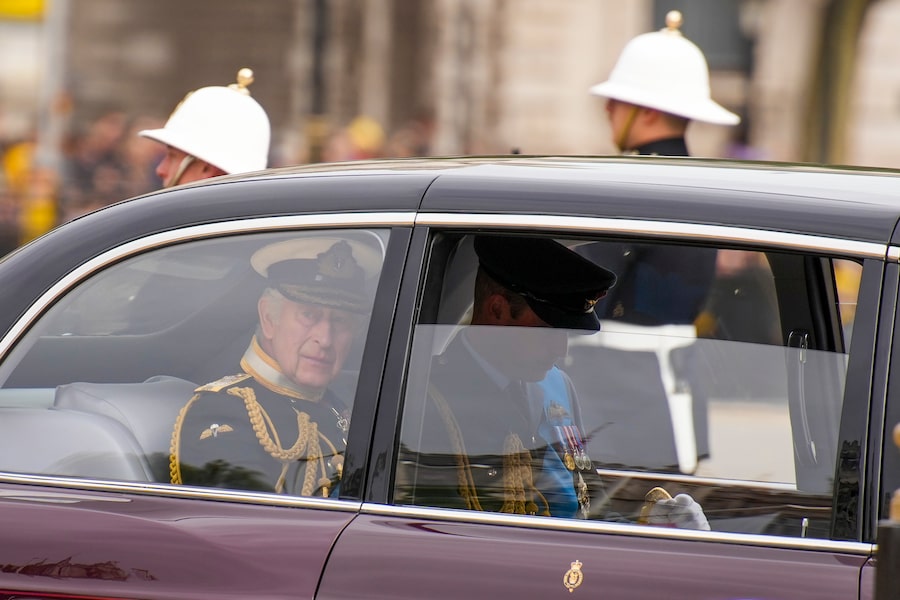

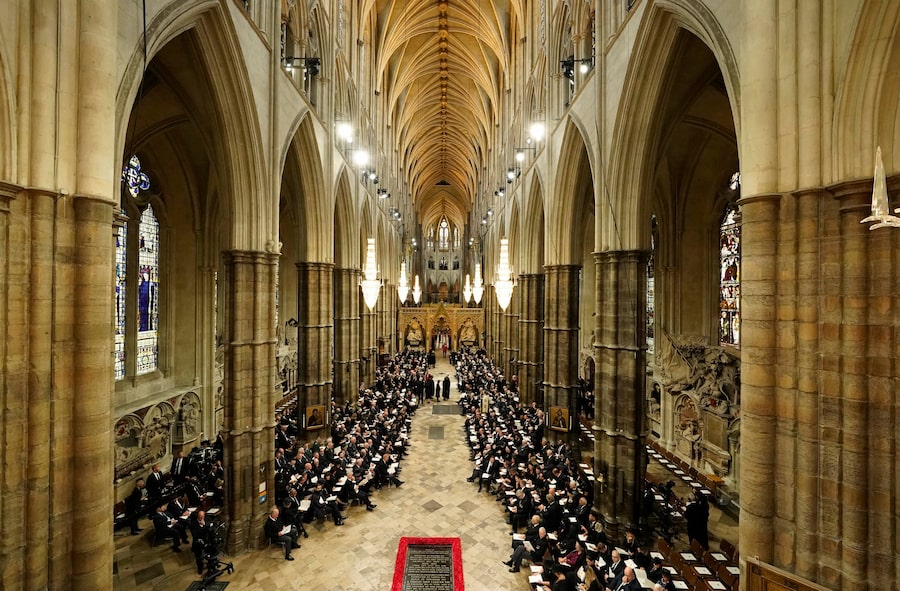


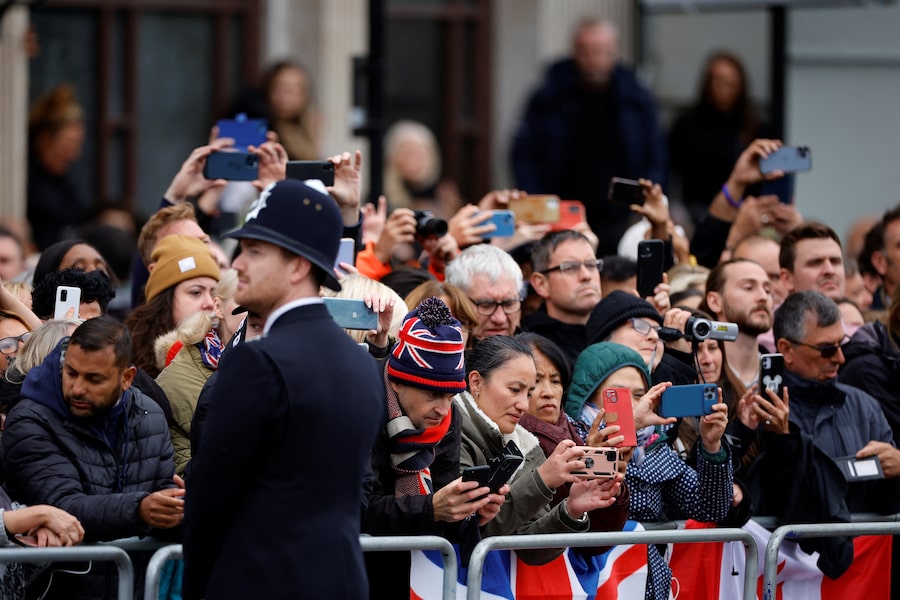

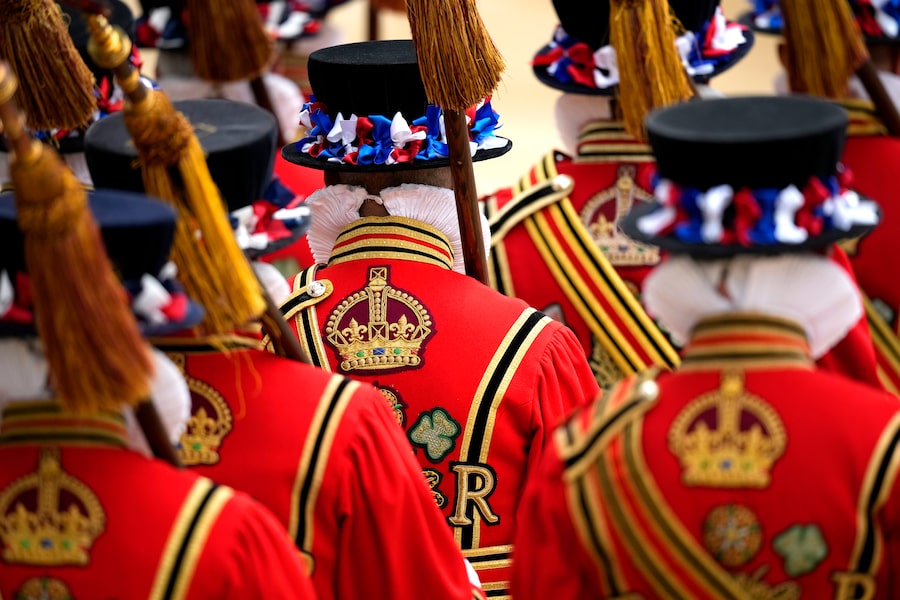


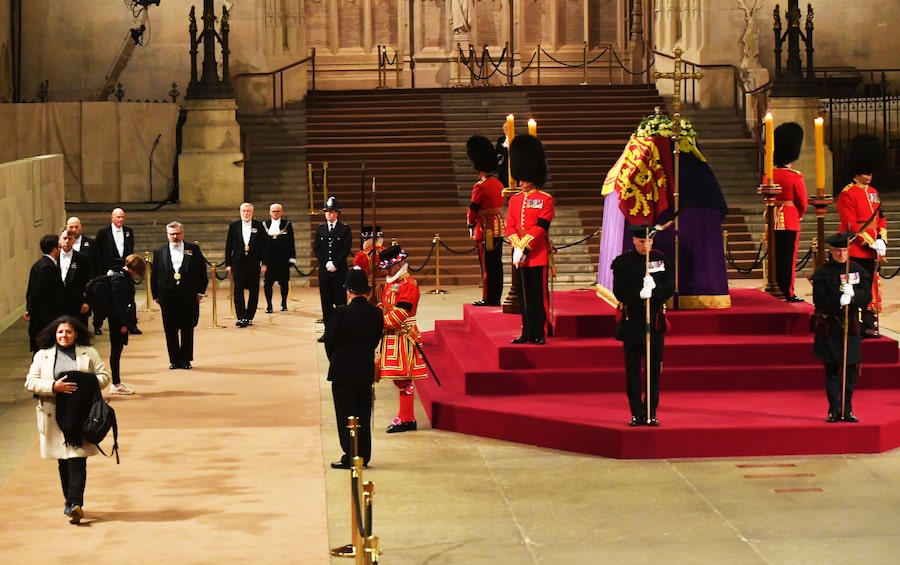

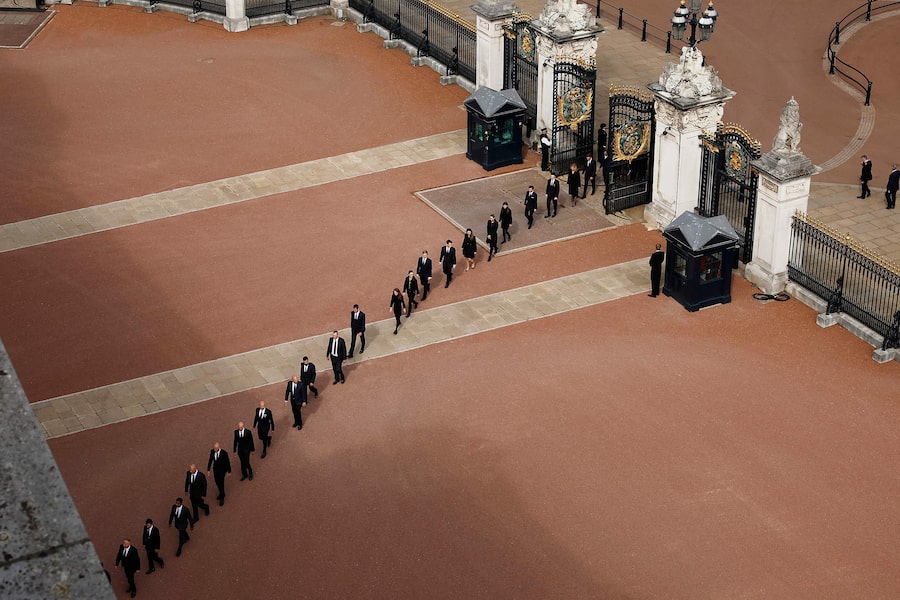
 Paul Waldie
Paul Waldie Marieke Walsh
Marieke Walsh